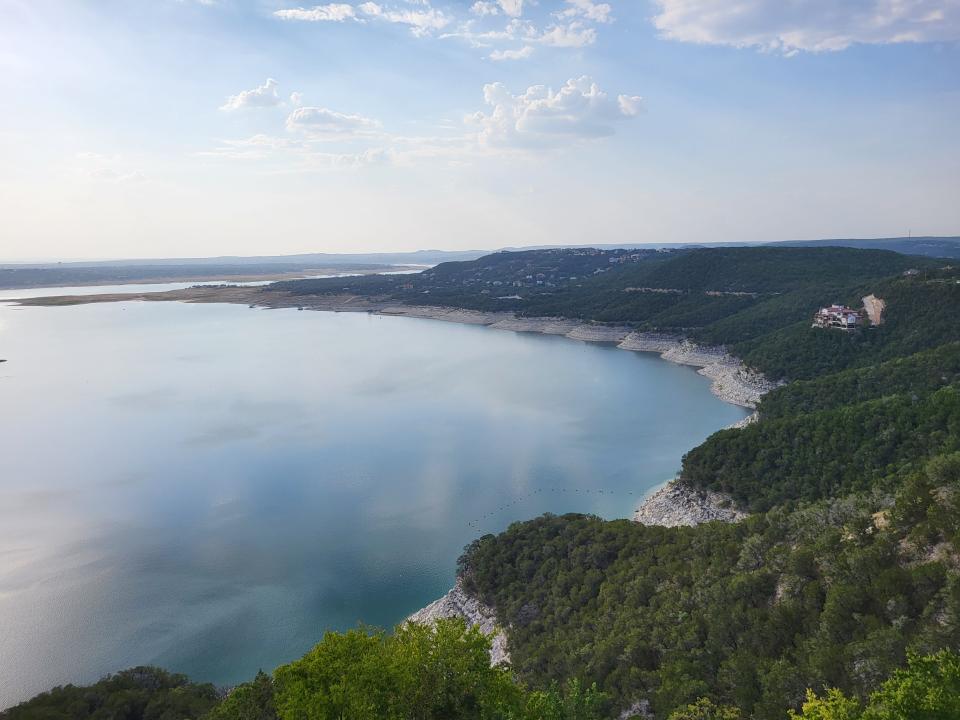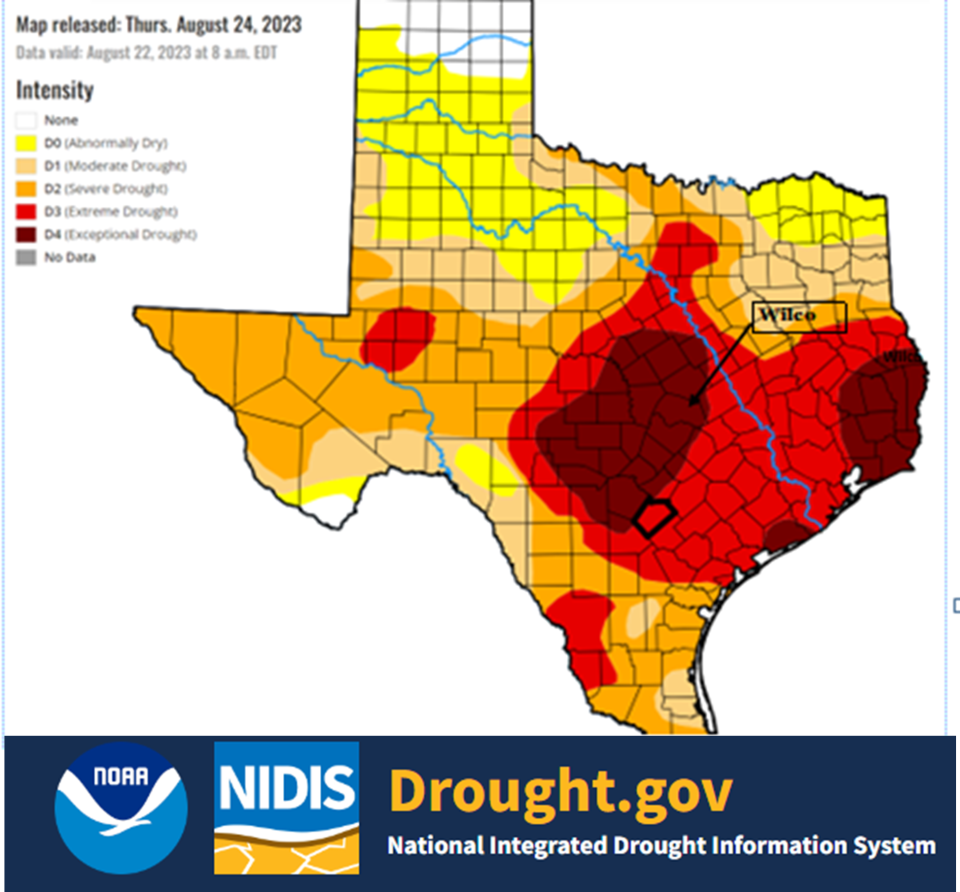Williamson Commissioner Cook: No water is coming in. What are we going to do?
The Texas Highland Lakes are a chain of freshwater reservoirs formed by six dams on the lower Colorado River (the Texas version) and cover areas from West Texas to Matagorda Bay and the Gulf of Mexico. They ultimately provide flood control and water to the bulging population of Central Texas while some provide hydroelectric power. Management plans for the reservoirs all depend upon actual water inflows into the reservoirs. Nine out of the 10 worst inflows into the Highland Lake system have occurred since 2005. The last year the reservoirs were full was 2019. What now that there are nearly zero-acre feet of water flowing into the reservoirs? The series of dams, reservoirs and power plants are managed by the Lower Colorado River Authority. Our water supply is at risk; current LCRA management plans allow rapid depletion of the reservoirs even without any rain events.

The dam creating Lake Buchanan was completed in 1938 with the purpose of providing flood control, hydroelectric power and public water. Outflows travel to the reservoir created by the Inks Dam, which also was completed in 1938. It serves as the smallest hydroelectric plant in the Highland Lakes chain. Inks Lake is a managed-level lake, meaning water from Lake Buchanan is released to maintain the Inks Lake level. In floods, the water just passes over an uncontrolled spillway and flows to the next managed-level reservoir, Lake LBJ, created by the Wirtz Dam, which was completed in 1951. This lake serves as the cooling reservoir for the Thomas C. Ferguson Power Plant near Horseshoe Bay. Built in 1974, the original single-unit, natural gas-powered turbine, in its last years, only operated during periods of peak demand or when other utilities needed reserve or emergency power. It stopped operating in September 2013, was dismantled, and was replaced with dual natural gas-fired turbines and a single steam turbine run by exhaust heat from the gas turbines in a configuration that generates 540 megawatts of electricity.

The Max Starcke Dam also was completed in 1951 and is the smallest one in the Highland Lakes chain. It created Lake Marble Falls, yet another managed-level lake. Unable to manage the massive water rise in October 2018 from record rainfall in Llano and Burnet counties, the town of Marble Falls took a major hit by flood waters as the Llano River reached historic levels of flooding. This dam is not involved in hydroelectric power production. I remember the flood water releases from the dams in our area being so awesome in their show of nature’s power in 2018. Lake Travis, our greatest display for the effects of lack of inflow and principal source of drinking water for so many, is scary right now. The water is held back by the Mansfield Dam, completed in 1942, and has the largest hydroelectric power plant operated by the LCRA. It is the only LCRA reservoir specifically designed for flood control. As of Aug. 29, its current water level is 632 feet above mean sea level and dropping. Full capacity is 681 feet above mean sea level. It is to be held, by policy, at 630 feet above mean sea level but is both evaporating and being used resulting in a loss of 28 acre-feet per week in the upper Highland Lakes.
Lake Austin was formed by the Tom Miller Dam and is the last of the LCRA managed-level lakes, meaning water is released from Lake Travis to hold the level in Lake Austin. The dam was completed in 1940 and originally was to both provide flood relief to Austin and support Austin’s power plant; the Holly Street Power Plant closed in 2007. Lady Bird Lake (also known as Town Lake) and the Longhorn Dam (1960) are city of Austin-managed entities.
I attended a water summit sponsored by the Central Texas Water Coalition that featured David Yeomans, the weatherman from KXAN, at the Oasis. David was able to explain a lot about local and global weather conditions. Meteorologists seem to be stumped by some of the conditions. They hope the developing El Niño pattern will help break this heat dome once October rainy season arrives, but there is some uncertainty in how much rain this year’s El Niño may deliver due to other negating factors. Hurricane season continues through November, which could also bring us relief. Ocean water temperatures are generally up by about 2.5 degrees, although there are areas where the temps are actually lower than normal; air temps are up 6-8 degrees above normal, and we’ve had only 5% of normal rainfall in the past two months (0% at my house). We had the hottest July in recorded history.

That heat dome means air is being pushed down rather than rising and carrying moisture with it to form clouds. The current weather models are not predicting rain for us in Central Texas. Meanwhile, Williamson and Travis counties are now completely inside the exceptional drought area per the federal drought map. We have the worst inflows into the Lower Colorado River since 1942. Under the heat and consumption pressures, Lake Travis is losing 900 million gallons per day.
So what now? In what priority do you place green (and greedy) turfgrass for water use? We cannot conserve our way out of this pending disaster. El Niño atmospheric conditions are just starting. Huge rainfalls have saved us in the past. Will they be repeated despite our conditions? Have you thought about what happens with our wastewater discharges when our streams go dry? Woe for us all, Texas – sandwiched between droughts and floods.
Terry Cook is county commissioner of Precinct 1, which includes most of Round Rock, most of Austin in Williamson County and part of southern Cedar Park.
This article originally appeared on Austin American-Statesman: Wilco Commissioner Cook: No water coming in. What are we going to do?

